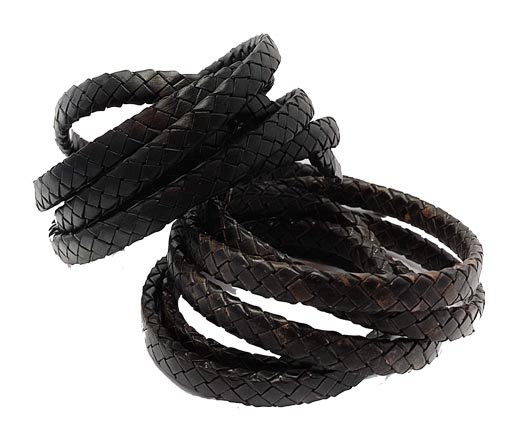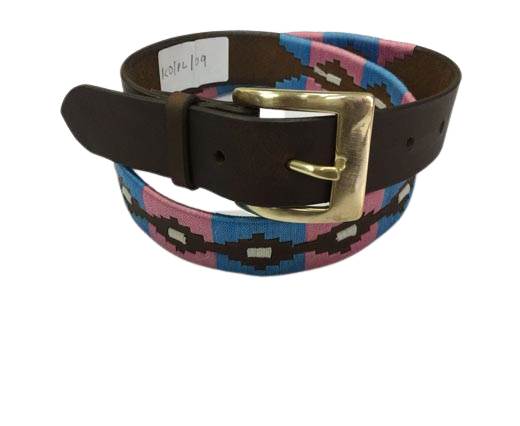Leather Cords V/S Other Materials
Leather Cords vs. Other Materials
Jewelry making is a creative endeavor that allows crafters and enthusiasts to express their artistic vision through various materials. Among the plethora of options available, leather cords have gained significant popularity. But how do they really compare to other materials like metal wires, synthetic cords, and natural fibers? Let's explore this in detail.
Discovering the Versatility of Jewelry Making Materials
Jewelry making as an art form is all about versatility. From ancient times to the modern era, artisans have used an array of materials to craft stunning pieces. These materials range from precious metals and gemstones to more accessible options like leather, synthetic cords, and natural fibers. Each material brings its unique characteristics and aesthetic appeal to the table, allowing jewelry makers to experiment and create one-of-a-kind pieces.
There are many blogs about leather cords on our website, this time we want to focus on other materials.
Leather Cords: Qualities and Benefits
The Allure of Leather
Leather cords have long been cherished in the world of jewelry making due to their natural beauty and versatility. They come in various types, such as cowhide, goatskin, and suede, each offering a distinct texture and appearance. Leather's rich and rustic aesthetic can add a touch of elegance and sophistication to any jewelry piece.
Durability and Strength
One of the primary advantages of leather cords is their durability. Leather is known for its strength and resilience, making it an excellent choice for pieces that need to withstand daily wear and tear. Whether it's a bracelet, necklace, or anklet, leather cords can handle the rigors of everyday use without losing their charm.
Comfort and Flexibility
Leather cords are not only durable but also incredibly comfortable to wear. Unlike some materials that can be stiff or irritating to the skin, leather is soft and pliable. This flexibility allows for easy manipulation during the crafting process and ensures that the final piece is comfortable to wear. Leather's natural elasticity also makes it suitable for adjustable jewelry designs, catering to various wrist and neck sizes.
Comparing Leather with Other Common Jewelry-Making Materials
Metal Wires
Metal wires are a staple in jewelry making, known for their strength and shiny appearance. They come in various metals, including gold, silver, copper, and aluminum. Metal wires can be easily shaped and molded into intricate designs, making them ideal for creating detailed and elaborate pieces.
Advantages
One of the key benefits of metal wires is their ability to hold their shape. This rigidity allows jewelry makers to create sturdy and long-lasting pieces. Metal wires are also highly versatile, suitable for a wide range of techniques such as wire wrapping, beading, and shaping.
Drawbacks
However, metal wires can be challenging for beginners due to their stiffness. They require specialized tools for cutting, shaping, and finishing, adding to the overall cost and effort involved in the crafting process. Additionally, certain metals may cause allergic reactions in some individuals, limiting their suitability for sensitive skin.
Synthetic Cords
Synthetic cords, typically made from materials like nylon, polyester, and paracord, offer a modern and vibrant alternative to traditional materials. They are available in a wide range of colors, thicknesses, and textures, making them a popular choice for contemporary jewelry designs.
Benefits
Synthetic cords are known for their durability and resistance to environmental factors such as moisture and UV rays. This makes them ideal for outdoor jewelry pieces that need to withstand various weather conditions. They are also affordable and readily available, making them accessible to crafters of all levels.
Limitations
Despite their advantages, synthetic cords may lack the natural charm and authenticity of materials like leather and metal. They can sometimes feel less luxurious and may not age as gracefully as natural materials. Additionally, synthetic cords are less environmentally friendly compared to natural options, which may be a consideration for eco-conscious crafters.
Natural Fibers
Natural fibers, such as cotton, hemp, and silk, bring an organic and earthy feel to jewelry making. They are prized for their softness, lightweight nature, and eco-friendly properties. Natural fibers can be dyed in various colors, allowing for creative experimentation and customization.
Advantages
One of the main benefits of natural fibers is their comfort. They are gentle on the skin and hypoallergenic, making them suitable for individuals with sensitive skin. Natural fibers are also versatile and can be used in various techniques, including macramé, braiding, and weaving.
Challenges
However, natural fibers may not be as durable as leather or synthetic cords. They can be prone to fraying and may require additional care to maintain their appearance. Natural fibers are also less resistant to moisture, which can affect their longevity and strength.
What to consider when Choosing the Right Material?
Aesthetic & Style
When choosing a material for your jewelry-making project, consider the aesthetic and style you want to achieve. Leather cords offer a rustic and timeless look, while metal wires provide a sleek and modern appeal. Synthetic cords bring vibrant colors and durability, while natural fibers offer an organic and earthy charm. Think about the overall design and the message you want your jewelry piece to convey.
Durability & Maintenance
Durability and maintenance are crucial factors to consider, especially for pieces that will be worn frequently. Leather cords are known for their strength and resilience, making them suitable for everyday wear. Metal wires offer excellent durability but may require polishing to maintain their shine. Synthetic cords are low-maintenance and resistant to environmental factors, while natural fibers may need extra care to prevent fraying and damage.
Cost & Availability
The cost and availability of materials can also influence your decision. Leather cords are generally affordable and widely available, making them accessible to most crafters. Metal wires can vary in price depending on the metal type, with precious metals being more expensive. Synthetic cords are budget-friendly and easy to find, while natural fibers may be slightly more expensive but offer an eco-friendly option.
To sum up
Choosing the right material for your jewelry-making project is a critical decision that can impact the final outcome. Leather cords offer a unique combination of durability, comfort, and rustic charm, making them a favorite among many crafters and jewelry makers. However, other materials like metal wires, synthetic cords, and natural fibers also bring their own set of advantages and appeal.
Leather Cords with Sun Enterprises
Sun Enterprises, a manufacturer of leather cords and jewelry findings, offers a diverse range of options for jewelry makers. From classic round leather cords to flat and braided options, from magnetic clasps to gemstones, Sun Enterprises provides materials that suit a wide array of jewelry styles and techniques.














































